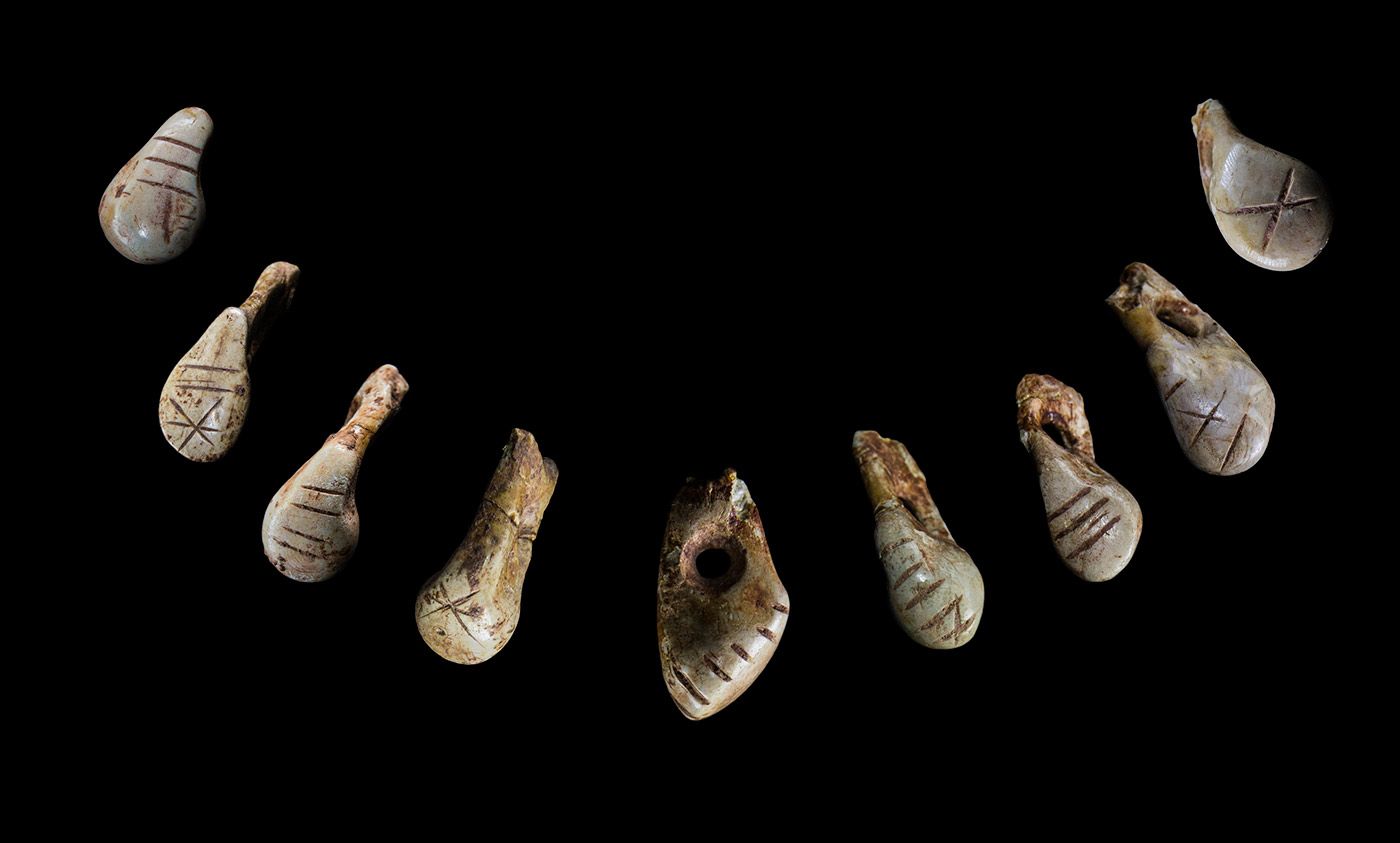by IZZY WISHER

PHOTO/D von Petzinger, Collection MNP Les Eyzies France
Ice Age Europe, approximately 20,000-13,500 years ago; a period known as the Magdalenian. The climate is gradually ameliorating after glaciers and cold temperatures reached their height in the Last Glacial Maximum. Despite this, the landscape is frozen, arid and unforgiving for all who live within it. Dispersed and highly mobile hunter-gatherers populate this harsh environment. These Magdalenian people adapted to the landscape by using all available resources to create a rich and diverse material culture, which included tools, highly efficient hunting projectile weapons, tailored clothing, cave art, portable art, beads and much more. All aspects of this culture depended on relationships with other human groups, and an intimate knowledge of animals that were a crucial resource during this period, enabling the Magdalenian people to survive. It is these relationships, how they were maintained by these people, and how they shaped past identities and social behaviours, that are the key to better understanding our ancestors’ social lives and behaviours.
During this period, around 19,000 years ago in southwestern France at a site called Saint-Germain-La-Rivière, an adult woman dies and is prepared for burial by members of her society. She is adorned with 70 red-deer teeth that were perforated by a flint tool to be used as beads; many of which have a unique engraved design and were smeared with red ochre. These beads provide a window into the period, giving an insight into the way our Magdalenian ancestors negotiated relationships, and the importance of this meshwork of relations to their survival. The burial context of these beads demonstrates how these relations took centre stage in the social lives of Magdalenian people. Untangling the object biographies of these beads – the way they were made, used and deposited – can reveal the creative ways our ancestors used objects to negotiate and embody intricate human-animal-object-landscape relationships. Insight into the ‘lives’ of these beads can be achieved by contextualising the successive stages of their biographies within the environmental and social conditions of the Magdalenian.
Aeon for more
